#low waste
Explore tagged Tumblr posts
Text
You CAN be eco friendly with tech!!
Use energy saver mode
Dont keep your pc and chargers plugged in when not in use. Better yet, get outlets that can switch off.
Buy energy efficient products
Replace parts instead of scrapping the whole product, and when it is beyond repair, recycle or sell for parts
Replace your phone battery instead of buying a new phone
Buy used/refurbished. They’re just as good as new, but youre not contributing to more demand
Try to buy local
Buy sustainably sourced accessories or ones that can be easily composted or properly disposed of
Use Ecosia to plant trees while you search
Use wildhero to plant trees with your email
Limit AI usage
644 notes
·
View notes
Text
👏 Scrap stock 👏 scrap stock 👏
85 notes
·
View notes
Text
Fast Fashion to Slow Fashion :: a DIY guide to up-cycling and mending clothing on a budget.
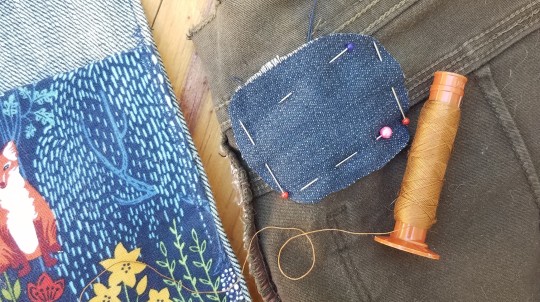
For those of us living on a small income, buying from sustainable fashion brands is often out of reach. I would like to point out that *buying new but ecological garments isn't the only way to cultivate a slow fashion wardrobe*. Here are a few options for transforming *upcycling* your clothing, thus making fast fashion into slow fashion:
Mend and repair :: patch hand-me-down sweaters, fix holes in leggins from target and other department stores. By giving items a longer life, and preventing unnecessary garbage, fast fashion items become slow fashion! Here are two tutorials I have written on how to mend a torn belt loop on jeans and patch leggings.
Up-cycle clothing that doesn't suit your style :: when preparing for a trip back home and wondering how to acquire some nicer clothing for the trip a friend of mine gifted me a big bag of clothes. Almost all of them were items that we could call "fast fashion" and nearly all also had stains or rips that needed mending. By fixing and adapting these items and then going on to wear them for several years longer, I am keeping them out of the cycle of buy then trash.
Tailor items that don't fit you :: Taking in clothing is quite simple and there are lots of tutorials on how to hem pants and skirts or take in a size or two. I recently made a tutorial on how to take out a skirt, or make a skirt bigger by adding panels.

At some point, we must face the fact that a t-shirt is totally worn out and cannot be used for clothing any longer. In such cases here are a couple of crafts to utilize the fabric and other items from the scrap pile:
Create a Quilt :: if you find yourself with a pile of beautiful & memory-filled scraps -- transform them into a quilt as I have done in this post.
Make Twine :: Longer scraps of fabric, especially those from stretch materials like leggings or jersey cotton t-shirts can be made into a thing rope also known as fabric twine. I wrote a tutorial on how to make twine out of fabric scraps.
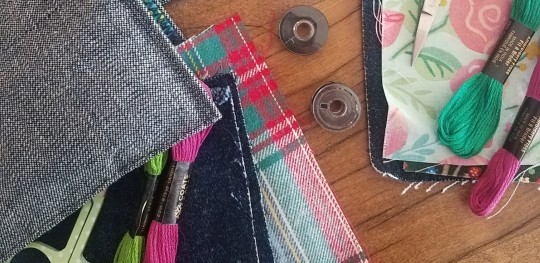
<<Best of luck in all your crafting endeavors!>>
#upcycled fashion#slow fashion#fashion tutorials#mending#mending 101#mending references#mending masterpost#cottagecrafts#upcycle#repair culture#low waste#zero waste#wasteless crafts
488 notes
·
View notes
Text
PLARN (Plastic Bag Yarn) TUTORIAL!
You Will Need:
Plastic grocery bags (though you can also use plastic packaging if it didn’t contain food, or really just any plastic if it’s long enough and clean.)
Scissors
Pen that can mark the plastic
Something to measure with
I’m not the best at describing things, so I’m going to do my best to supplement with images. I would put alt text but I don’t honestly know how to meaningfully describe the images that’s not what I write in the tutorial. Also don’t mind my dirty desk!
Instructions!
Grab your bag! I’m using this blue one because I thought it would show up better on camera and I have a bunch.

Flatten it out, like so! I like to hook one thumb in the bottom flap thing, where it’s sealed shut, and the other in the handle.

Fold it up! I fold it in half, twice, hot dog style. Should get you a nice long rectangle. Make sure the edges are nice and lined up, especially the bottom and the handles.

Chop off the sealed bottom as close as you can to the seam, and the handles as straight as possible. You want nice square corners. You’ve basically got a cylinder of plastic, now.

Unfold one side. It should have only one layer of plastic. If it has more, refold it up and flip it over, and unfold it again.

Measure and mark the width you want your plarn to be! I use an old staples box for the perfect width for my use, but you might want it thinner or thicker depending on. Too thin might cause issues with stretching while working, though.

Cut off any excess. This is where I’m discarding the damaged part!

Mark the top edge, staggered from the bottom marks. Exactly half way! This will be a guideline later.

Cut the marks on the folded side. DO NOT CUT ALL THE WAY ACROSS! Only cut the folded parts, into strips.

Unfold it! Everything should be attached on one side only. It’s time to Spiralize This Bitch.
Cut on a diagonal where one cut ends and the next begins. Hopefully that makes sense? You’re trying to take this tube and make it into a long spiral.

Ta da! You have 1 bag worth of plarn! Tie any subsequent strips together, and have fun working with your plarn!
PRO TIP: this is pretty labor-intensive but I’ve been reinforcing the plarn by single-crocheting the whole length of it, weaving tied ends in as you go. It’s worth it, because I’m making a granny square tote bag out of this, and I don’t want it to break when I’m done.
#keruucrafts#diy craft#diy tutorial#diy projects#crochet#knitblr#yarn crafts#yarnblr#crochet yarn#yarn#zero waste#low waste#zero waste craft#zero waste diy#reduce reuse recycle#solarpunk#solarpunk diy#creative reuse#reuse#recycle reuse renew rethink
34 notes
·
View notes
Text



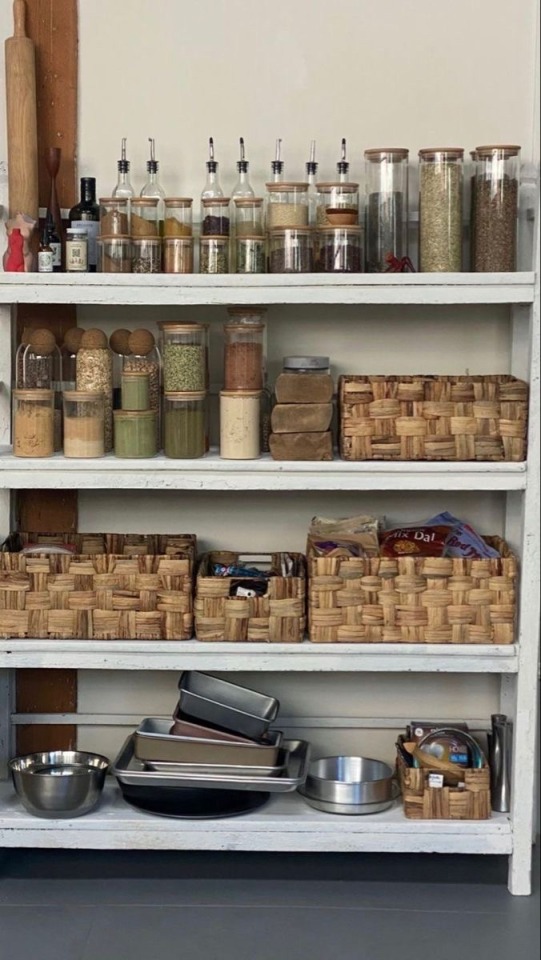
Low-waste & minimal — she’s resourceful, thoughtful, creative and love the simple things in life.
#lifestyle#thinkpink upload#soft life#thinkpink moodboard#minimalist#minimalism#echo friendly#low waste
294 notes
·
View notes
Text
the most beautiful woman on this earth is a vegan childfree lesbian cat lady who composts and doesnt use plastic and buys organic grains in bulk and grows weed. she has multiple degrees and a book collection older than me. where can i find her. the pacific northwest
27 notes
·
View notes
Text
12. 28. 2024
This year is now almost to an end already!
Small garden and going on post today~

Have 2 big carrots in the current grow and a ton of new started sprouts. Guess it got too cold on one side and they've been napping for a bit. May need to see about a small hedgerow cover to trap heat at night. Probably could make that from old clear shower curtain and some small peices of wood.

I believe this is a praying mantis eggcase. Not quite sure which variety. In honesty I figured we lost out on them due to heat, not enough cover/food and the surplus of the assassin bee eaters I kept finding.

The one tomatoe is now begging to be well covered in the fruit, I'll need to get a cover on them soon as the wild birds keep pecking them out as they jsut ripen. I don't mind sharing a few, but it's been everyone this year :(

Some floral blooms 🤩 their prettier each year.


Been working on making noodles and crackers. so far I've got plain pumpkin+wheat and pumpkin+wheat+ egg yolk down okay enough, i feel
I did unfortunately over startch the boil water (which burned the noodles and flavored the sauce), so next time, I'll probably use a bigger pan and switch it out halfway so there's clean water.

Harvested and spread out the sunchoke tubers to grow more of them. Did not get to try them out yet. If anyone has, what was your thought on them?
They produced decently well in my opinion, little small the first year but the bigger and a deeper prepared bed probably would produce some good sized and number of them.

And did some cleanup of chicken alley. Thye got those hollyhocks nice and dusty back there lol. The clean up was mostly eeding out any grass and had material (both went to the chickens)
I got the seed table reset up and done.
Today I intend to do soem garden work, what kind yet I'm not certain. I do need to repot and clean up the vera plant. (The pot is falling apart) I'd also like to do some basic clean up to prepare for the new year and work on some goals towards a more successful garden and urban homestead this upcoming year.
Anyone started their new year resolutions with their goals of gardening, sustainability, homecookiny or otherwise? Care to share them?
That's it for today's post and update :)
🌲🌱Happy Urban Homesteading🌱🌲
#homesteading#thestudentfarmer#self sufficient living#studentfarmer#self sufficiency#food#garden#gardening#low waste#chickens#city garden#urban biodiversity#urban green spaces#urban homesteading#urban gardening#low waste cooking#low waste living#right to grow food#food is a human right#human right to clean food#frugal cooking#home cooking#from scratch
16 notes
·
View notes
Text
My low waste goal for today!!
Unpicking a dress I like the fit of but HATE the fabric.
I’m taking it apart piece by piece so I can copy the pattern. I’ll make a dress version, which is what this piece originally was, and then shorten the waist so I can use it to make shirts.
My goal is to eventually make all my own clothing. That way I can use natural fibers (cotton, linen, wool) instead of buying clothing that is almost always some blend of polyester. Micro plastics are no joke!
So I’ll take a few hours (oh no) to completely unlock this whole dress. And if I have the spoons (probably not) I’ll try to draft a pattern. It would be my first time drafting a pattern, and I am nervous/excited!
105 notes
·
View notes
Text
A sock!
Quick post. I'm alive and less sick!

I used lazy needle lace because it needed to stretch.
In retrospect, I really could've done a regular darn and have called it good enough.
18 notes
·
View notes
Text

i made beignet a cat scratcher out of a few card board boxes :)
21 notes
·
View notes
Text

This tote bag is nice and big but it had this annoying print on it because years ago i bought it at a fast fashion store to avoid a single use bag. And since i don't wanna be a walking ad and i am a little punk i am covering the print with patches. I might also make longer handles for it, so i can wear it over my shoulder. I painted most of the patches myself. This bag seems like a better place for them than my pants since i do wash my pants regularly /j. Also the weather in germany is always either too hot or too cold to wear denim jackets or vests (at least for my neurodivergent ass) so even though i do have a battle vest and a battle jacket, i barely wear them which is sad
So if u have some handy tote bags which have annoying logos on them, just cover it. U will probably use them more then since u put effort in it and they look much cooler :D
If u don't like the punk look, u could use an old shirt with a cool print on it that u don't wear anymore for whatever reason or make one big patch out of any piece of fabric big enough and paint something on it urself. It's a really fun project and hard to mess up and even if u mess it up, u can just detach ur patch and try again
#diy#diy or die#punkstyle#punks not dead#low waste#sewing#upcycle#reduce reuse recycle#practical solarpunk#solarpunk
45 notes
·
View notes
Text
For the past year and a half, my friend and I have been using the same 2 plastic lined gift bags back and forth. I give him a gift in the bag, then later he gives me another gift in the same bag. It’s a fun gesture between us, and I just realized how accidentally sustainable it is
239 notes
·
View notes
Text

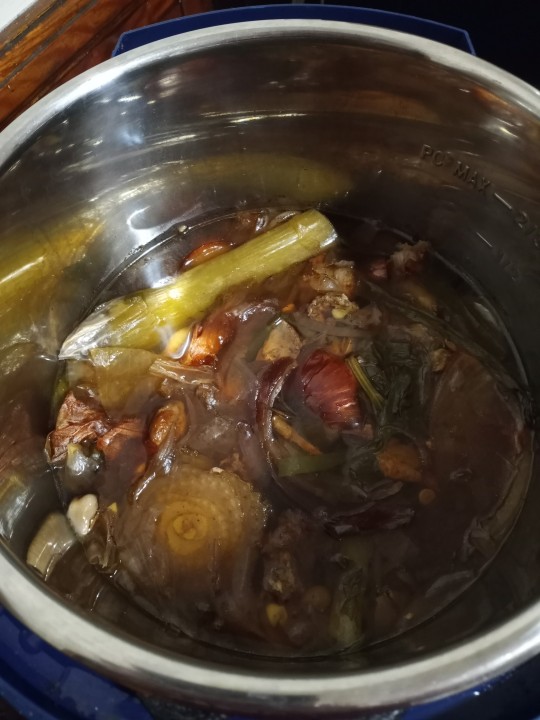
Scrap soup time babeyyy
89 notes
·
View notes
Text
Old Recipe Books
I enjoy making recipes from old cook books. Some have been passed down to me, others I've bought cheaply second hand.
Why?
There's something about making a recipe that other cooks have made decades before you.
Old recipes usually use simple, cheap, raw ingredients.
Old recipes rarely require the cook to have any specialized gadgets or chef level skills to make them.
Old recipes were often designed for the home cook on a modest budget.
Old recipes often generate zero food waste, incorporate the use of left overs and rarely require one off boutique ingredients.
My old recipe books are like old friends.
#cooking#recipes#baking#recipe book#kitchen#books#self sufficiency#low waste#home cooking#food#ingredients
24 notes
·
View notes
Text
Y'all know what's solarpunk? Or at least sustainable? A good sourdough starter. It requires flour, quite a bit of it to get started, but it's healthier for you, and you can use the discard after the initial start phase for all kinds of tasty things meaning no waste and less store bought pancakes, crackers, brownies, breads, etc.
Here's how you make a starter (disclaimer this is how i made it, I've noticed a lot of sourdough purists insisting u need to weigh everything every time you feed and you need a scale for all your recipes, etc i have done none of that and i don't have the energy for all that either)
You need:
Flour, i use unbleached but that's because i had a bag lying around i used for vegan cookies as a gift and i heard it works for starters, Harold (my starter) seems to like it so why change, but I've heard of people using literally any kind of flour
Water, enough to mix into a thick pancake batter consistency
If you feel weird wasting flour you can try the quarantiny starter idea from king Arthur's flour which uses only a tablespoon of flour and some water until it's active and then you bulk it up when you want to bake with it.
You're going to want to add your flour and water and mix until it's a thick pancake batter consistency, i started with a half cup of flour but i left on vacation and my grandma accidentally bulked it up so now it's up to like a cup.
Every 24 hours (not exact measurement and some people swear by feeding it every 12, i do 24 but it varies by person and starter) you are going to want to toss half (in the garbage at this stage) and mix in about the same amount of flour as the mixture you just tossed (ex. You estimate you tossed half cup of starter, add half cup of flour to remainder in jar) add enough water til you reach consistency. I've gotten told this doesn't work but my starter is happy and thriving so I'm sticking with it.
Once your starter is active and consistently doubling within 8 hours after feeding (you will notice it does this in the first few days, that's Bad Yeast do not use. Your starter will hit a slump and then come back to rising, that's good yeast. I recommend putting a rubber band or hair tie where it is after u feed so u can monitor rise easier) experts recommend waiting ten days from initial starter start date to use it, i waited three weeks. Toss all starter at feeding during this time.
ONCE UR STARTER IS ACTIVE then u can save all the stuff u were tossing in a jar in the fridge (i use an old spaghetti sauce jar, and my starter is also in a big olive jar lmao) and use it in recipes that doesn't require yeast, this is sourdough discard and you can find a ton of recipes online for it.
If you want to use it to bake bread, you will use it when it's at its peak rise area, usually double what it was when you feed it. This is the yeast being all active and happy which will rise your bread. I recommend this recipe for beginners:
I reduced the salt to 1 tsp and added probably around a cup and a half of whole wheat flour, i had it lying around and why not. Changes will depend on your elevation and what works for you, it's not a science which is why no recipe will work for literally everybody. Almost everybody's first sourdough bread will fail one way or another but 98% of the time it's still edible and you learn!!!
Feel free to ask questions :)
Edit: forgot to mention that you should keep your jar covered, but don't screw the lid on, i just use the flat part of a canning lid placed on top
#sourdough#solarpunk#practical solarpunk#sustainable#environment#environmentalism#environmentally friendly#sustainability#ecofriendly#eco friendly#low waste#sourdough bread#baking bread#sourdough discard#yeast#sustainable baking#baking#bread baking
321 notes
·
View notes
Text

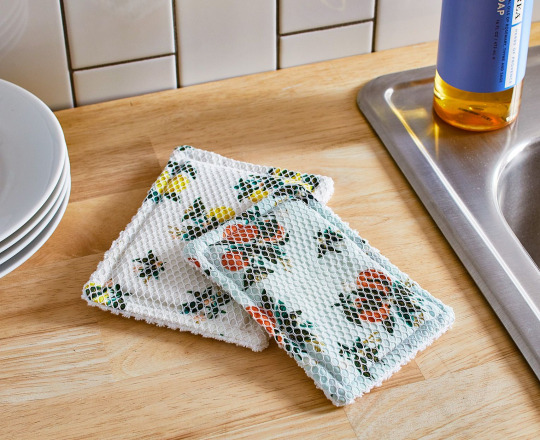
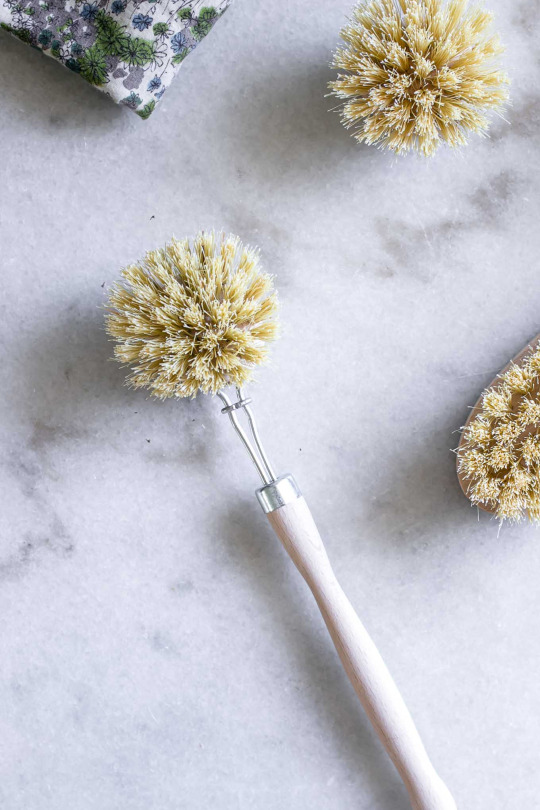



6 Eco-Friendly Alternatives to Kitchen Sponges
Natural Cellulose Sponges, Reusable Cloth Sponges, Wooden Dish Sponges, Reusable Dish Rags, Copper Scours, Scours made from Natural Materials (eg. coconut coir)
Traditional kitchen sponges are made of a mixture of cellulose, a naturally-occurring wood fiber, and synthetic materials like polyethelene plastic mesh to provide durability and a scouring surface. This combination is what makes up the typically yellow and green colored sponges that are most commonly sold today. In addition to its mixture of natural of synthetic materials, kitchen sponges are also usually treated with antibacterial agents to prevent the growth of harmful bacteria (and then spreading it around your kitchen each time you clean). Add to this that most kitchen sponges have a lifespan of tops a few weeks – and they’re packaged in plastic – and you can see how these are not a low waste option for keeping your kitchen clean. In addition, antibacterial agents added to sponges typically include triclosan, and according to the Environmental Working Group, “the U.S. FDA advisory committee has found that household use of antibacterial products provides no benefits over plain soap and water, and the American Medical Association recommends that triclosan not be used in the home, as it may encourage bacterial resistance to antibiotics.”
#p#txt#mindful consumption#zero waste#low waste#eco friendly#eco conscious#ecofeminism#sacred spaces#solarpunk#mindful living#soft living#slow living#ethical consumption#green living#sponges#sidewalkchemistry
114 notes
·
View notes